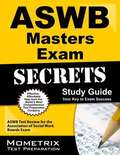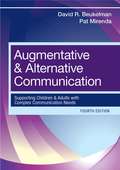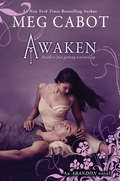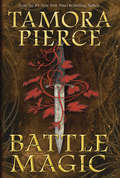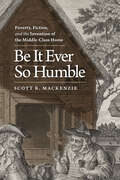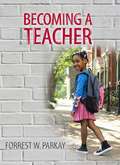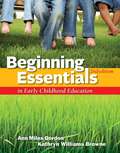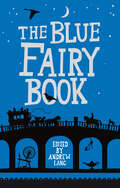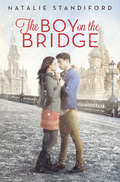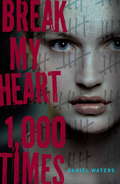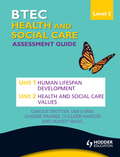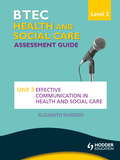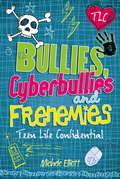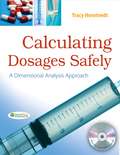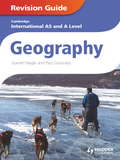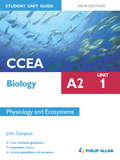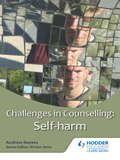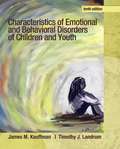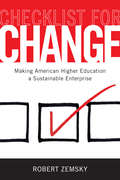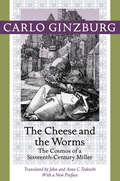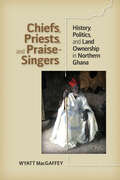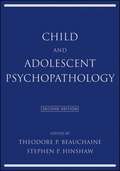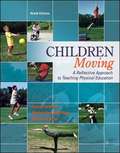- Table View
- List View
ASWB Masters Exam Secrets Study Guide
by Aswb Exam Secrets Test Prep StaffASWB Masters Exam Secrets helps you ace the Association of Social Work Boards Exam, without weeks and months of endless studying. Our comprehensive ASWB Masters Exam Secrets study guide is written by our exam experts, who painstakingly researched every topic and concept that you need to know to ace your test. Our original research reveals specific weaknesses that you can exploit to increase your exam score more than you've ever imagined. ASWB Masters Exam Secrets includes: The 5 Secret Keys to ASWB Exam Success: Time is Your Greatest Enemy, Guessing is Not Guesswork, Practice Smarter, Not Harder, Prepare, Don't Procrastinate, Test Yourself; A comprehensive ASWB Exam review including: ASWB Overview, Why is Licensing Needed?, How to Register, Registration, What to Expect, Scoring, Four Levels of Licensing Examinations, Bachelors, Masters, Advanced Generalist, Clinical, Category Example Questions, Bachelors Examination, Masters Examination, Advanced Generalist Examination, Clinical Examination, The Practice Analysis, Recall: Level One, Application: Level Two, Reasoning: Level Three, General Questions Concerning ASWB, Passing scores, Different Jurisdictions, Tests Administration, Exam Locations, Stages of Clinical Practice, Beginning Stage, Establishing Relationships, Contracting, Researching, Examination Content Outlines, How to Use the Outlines to Study, and much more. . .
Augmentative And Alternative Communication: Supporting Children And Adults With Complex Communication Needs
by David R. Beukelman Pat MirendaAs AAC use continues to flourish and new technology revolutionizes the field, tomorrow's service providers need current, authoritative information on AAC for children and adults with communication disorders. That's why David Beukelman and Pat Mirenda have revised and updated the bestselling Augmentative and Alternative Communication--the trusted, widely adopted graduate-level text on communication disorders and AAC. The foundational textbook for SLPs, OTs, PTs, teachers, and other professionals in clinical and educational settings, this fourth edition is a definitive introduction to AAC processes, interventions, and technologies that help people best meet their daily communication needs. Future professionals will prepare for their work in the field with critical new information on advancing literacy skills (new chapter by Janice Light and David McNaughton) conducting effective, culturally appropriate assessment to determine AAC needs choosing AAC interventions appropriate for age and ability selecting AAC vocabulary tailored to individual needs using new consumer technologies as easy, affordable, and non-stigmatizing communication devices understanding types of symbols and how individuals use them promoting social competence supporting language learning and development providing effective support to beginning communicators planning an inclusive education for students with complex communication needs Readers will get a thorough overview of communication and AAC issues for people with specific developmental disabilities (including cerebral palsy, intellectual disability, and autism) and acquired disabilities (such as aphasia, traumatic brain injury, and degenerative cognitive and linguistic disorders). And with helpful photos, figures, and photocopiable forms, readers will be ready to collect and use important information on assessment, individual communication needs, classroom supports, and more. An essential core text for tomorrow's professionals--and a key reference for inservice practitioners--this new fourth edition expertly prepares readers to support the communicative competence of children and adults with a wide range of complex needs.
Awaken (Abandon #3)
by Meg CabotFrom #1 New York Times bestselling author Meg Cabot, the dark reimagining of the Persephone myth comes to a thrilling conclusion.Death has her in his clutches. She doesn't want him to let go.Seventeen-year-old Pierce Oliviera knew by accepting the love of John Hayden, she'd be forced to live forever in the one place she's always dreaded most: the Underworld. The sacrifice seemed worth it, though, because it meant she could be with the boy she loves.But now her happiness -- and safety -- are threatened, all because the Furies have discovered that John has broken one of their strictest rules: He revived a human soul.If the balance between life and death isn't fixed, both the Underworld and Pierce's home back on earth will be wiped away. But there's only one way to restore order. Someone has to die.
Battle Magic (The\circle Reforged Ser. #Bk. 3)
by Tamora PierceNEW YORK TIMES bestselling author Tamora Pierce returns to the magical world of Winding Circle.On their way to the first Circle temple in Gyongxi, mages Briar, Rosethorn, and Evvy pay a visit to the emperor's summer palace. Although treated like royalty when they first arrive, the mages soon discover that the emperor plans to invade Gyongxi, posing a fatal threat to the home temple of the Living Circle religion. Accompanied by one of the emperor's prize captives, the three mages rush to Gyongxi to warn its citizens of the impending attack. With the imperials hot on their trail, Briar, Rosethorn, and Evvy must quickly help the country prepare for battle. But even with the help of new allies, will their combined forces be enough to fight the imperial army and win the war?
Be It Ever So Humble: Poverty, Fiction, and the Invention of the Middle-Class Home
by Scott R. MacKenzieBefore the rise of private homes as we now understand them, the realm of personal, private, and local relations in England was the parish, which was also the sphere of poverty management. Between the 1740s and the 1790s, legislators, political economists, reformers, and novelists transferred the parish system’s functions to another institution that promised self-sufficient prosperity: the laborer’s cottage. Expanding its scope beyond the parameters of literary history and previous studies of domesticity, Be It Ever So Humble posits that the modern middle-class home was conceived during the eighteenth century in England, and that its first inhabitants were the poor. Over the course of the eighteenth century, many participants in discussions about poverty management came to believe that private family dwellings could turn England's indigent, unemployed, and discontent into a self-sufficient, productive, and patriotic labor force. Writers and thinkers involved in these debates produced copious descriptions of what a private home was and how it related to the collective national home. In this body of texts, Scott MacKenzie pursues the origins of the modern middle-class home through an extensive set of discourses—including philosophy, law, religion, economics, and aesthetics—all of which brush up against and often spill over into literary representations. Through close readings, the author substantiates his claim that the private home was first invented for the poor and that only later did the middle class appropriate it to themselves. Thus, the late eighteenth century proves to be a watershed moment in home's conceptual life, one that produced a remarkably rich and complex set of cultural ideas and images.A 2014 CHOICE Outstanding Academic Title
Becoming A Teacher (Ninth Edition)
by Forrest W. ParkayWith a bright and engaging writing style that enlists the voices from experts as well as novices, Becoming a Teacher explores what it means to be a professional teacher in today's climate of accountability, high-stakes testing, and changing legislation. The fully revised 9th edition embraces and articulates the changing field of education, outlining ways to be an agent of change in the profession, pinpointing meaningful uses of technology in education, clarifying realities of diversity in the classroom, and clearly outlining past, present, and future thoughts on curriculum, instruction, management, philosophy, and issues in education. This down-to-earth and straightforward approach provides students with the tools and information necessary to answer the questions, "What does it take to become a high quality teacher?" and "Do I want to teach?" Along the way, the author provides practical perspectives for meeting the challenges of teaching. Organized into four parts, the book addresses both functional and foundational topics to give readers a well-rounded view of the teaching profession.
Beginning Essentials In Early Childhood Education (Second Edition)
by Ann Gordon Kathryn Williams BrowneBEGINNING ESSENTIALS IN EARLY CHILDHOOD EDUCATION, Second Edition, is a streamlined foundations textbook that introduces readers to the field. This unique book is organized to answer four key questions: What is the field? Who is the child? Who is the teacher? and What is being taught? These four sections address the essentials in early childhood education, emphasizing multiculturalism and developmentally appropriate practice. A friendly design makes reading more enjoyable and information easier to absorb. Special boxed material highlights key issues related to standards, diversity, DAP, professionalism, and ethics. Video features introduce videos of actual early childhood settings that are available on the accompanying website, an invaluable resource that provides opportunities for reflection as well as for personal and professional development.
Behavioral Emergencies for the Emergency Physician
by Mary Nan S. Mallory Lara G. Chepenik Leslie S. ZunEmergency physicians, in all practice settings, care for patients with both undifferentiated psycho-behavioral presentations and established psychiatric illness. This reference-based text goes beyond diagnostics, providing practical input from physicians experienced with adult emergency psychiatric patients. Physicians will increase their understanding and gain confidence working with these patients, even when specialized psychiatric back-up is lacking. Behavioral Emergencies for the Emergency Physician is comprehensive, covering the pre-hospital setting and advising on evidence-based practice; from collaborating with psychiatric colleagues to establishing a psychiatric service in your ED. Sedation, restraint and seclusion are outlined. Potential dilemmas when treating pregnant, geriatric or homeless patients with mental illness are discussed in detail, along with the more challenging behavioral diagnoses such as malingering, factitious and personality disorders. This go-to, comprehensive volume is invaluable for trainee and experienced emergency physicians, as well as psychiatrists, psychologists, psychiatric and emergency department nurses and other mental health workers.
Behavioral Neurology & Neuropsychiatry
by David B. Arciniegas C. Alan Anderson Christopher M. Filley T. Angelita GarciaThe merger of behavioral neurology and neuropsychiatry into a single medical subspecialty, Behavioral Neurology & Neuropsychiatry, requires an understanding of brain-behavior relationships and a clinical approach that transcends the traditional perspectives of neurology and psychiatry. Designed as a primer of concepts and principles, and authored by a multidisciplinary group of internationally known clinical neuroscientists, this book divides into three sections: * Structural and Functional Neuroanatomy (Section I) addresses the neuroanatomy and phenomenology of cognition, emotion, and behavior * Clinical Assessment (Section II) describes neuropsychiatric history taking, neurological and mental status examinations, neuropsychological assessment, and neuroimaging, electrophysiologic, and laboratory methods * Treatment (Section III) discusses environmental, behavioral, rehabilitative, psychological, social, pharmacological, and procedural interventions for cognitive, emotional, and behavioral disorders. By emphasizing the principles of Behavioral Neurology & Neuropsychiatry, this book will improve your understanding of brain-behavior relationships and inform your care of patients and families affected by neurobehavioral disorders. David B. Arciniegas, MD is the Michael K. Cooper Professor of Neurocognitive Disease, Director of the Neurobehavioral Disorders Program, and Associate Professor of Psychiatry and Neurology at the University of Colorado School of Medicine. C. Alan Anderson, MD is Professor of Neurology, Emergency Medicine, and Psychiatry at the University of Colorado School of Medicine, and Staff Neurologist at the Denver Veterans Affairs Medical Center. Christopher M. Filley, MD is Professor of Neurology and Psychiatry, and Director of the Behavioral Neurology Section at the University of Colorado School of Medicine, and Neurology Service Chief at the Denver Veterans Affairs Medical Center.
The Blue Fairy Book (Fairy Books)
by Andrew LangThe first in a series of 12 fairy tale anthologies beloved of children in the last century, each a veritable treasure trove of stories for children and adults alike, spellbinding and specialOnce upon a time there lived a king who was deeply in love with a princess, but she could not marry anyone, because she was under an enchantment. So the King set out to seek a fairy, and asked what he could do to win the Princess's love . . .This very special anthology includes wonderful renditions of the old favorites such as Cinderella and Hansel and Gretel, as well as some intriguing fairy tales that modern audiences have yet to discover such as Why the Sea is Salt, Prince Hyacinth, and The Dear Little Princess. Andrew Lang collected stories from communities and traditions all over the world for his fairy books: from the Arabian Nights, China, and the Brothers Grimm. Many of the tales were translated into English for the first time for these anthologies, from languages as far afield as Russian, Norse, and Japanese. The book is republished here with a stunning blue jacket, accompanied throughout by the original illustrations.
The Boy on the Bridge
by Natalie StandifordA new breathtaking novel from Natalie Standiford about love and trust during the Cold War.Laura Reid goes to Leningrad for a semester abroad as Cold War paranoia is peaking in 1982. She meets a young Russian artist named Alexei and soon, with Alexei as her guide, Laura immerses herself in the real Russia--a crazy world of wild parties, black-market books and music, and smuggled letters to dissidents. She must keep the relationship secret; associating with Americans is dangerous for Alexei, and if caught, Laura could be sent home and Alexei put under surveillance or worse. At the same time, she's been warned that Soviets often latch onto Americans in hopes of marrying them and thus escaping to the United States. But she knows Alexei loves her. Right?As June approaches--when Laura must return to the United States--Alexei asks Laura to marry him. She's only nineteen and doesn't think she's ready to settle down. But what if Alexei is the love of her life? How can she leave him behind? If she has a chance to change his life, to rescue him from misery, shouldn't she take it?
Break My Heart 1,000 Times
by Daniel WatersLiving in the aftermath of the Event means that seeing the dead is now a part of life, but Veronica wishes that the ghosts would just move on. Instead, the ghosts aren't disappearing-they're gaining power. When Veronica and her friend, Kirk, decide to investigate why, they stumble upon a more sinister plot than they ever could have imagined. One of Veronica's high school teachers is crippled by the fact that his dead daughter has never returned as a ghost, and he's haunted by the possibility that she's waiting to reappear within a fresh body. Veronica seems like the perfect host. And even if he's wrong, what's the harm in creating one more ghost? From critically acclaimed Generation Dead author Daniel Waters, comes a delectably creepy and suspenseful thriller. Break My Heart 1,000 Times will leave readers with the chills. Or is that a ghost reading over the page? Adapted as the feature film I Still See You starring Bella Thorne.
BTEC First Health and Social Care Level 2 Assessment Guide: Unit 1 Human Lifespan Development & Unit 2 Health and Social Care Values
by Ian Gunn Carole Trotter Joanne FranksTake the guesswork out of BTEC assessment with sample student work and assessor feedback for all pass, merit and distinction criteria.By focusing on assessment this compact guide leads students through each pass, merit and distinction criterion by clearly showing them what they are required to do.- Helps your students tackle the new exam with confidence, with mock examination questions together with answers and feedback provided. - Provides a sample student answer for every single pass, merit and distinction criterion, together with detailed assessor's comments on how work can be improved, so that students know exactly what their work needs to show to hit their grade target - Saves you time - realistic model assignments are included and provide an opportunity to generate all evidence, with each criterion and grade clearly indicated, so there is no need to rewrite yet more assignment briefs- Use instead of a textbook - detailed revision-style summaries of all the learning aims from the unit support students, allowing them to quickly find the facts and ideas they will need for their assessment- Enables you to customise your course - combine this guide with others in the series so you only pay for the units you deliver
BTEC First Health and Social Care Level 2 Assessment Guide: Unit 3 Effective Communication in Health and Social Care
by Elizabeth RasheedTake the guesswork out of BTEC assessment with sample student work and assessor feedback for all pass, merit and distinction criteria.By focusing on assessment this compact guide leads students through each pass, merit and distinction criterion by clearly showing them what they are required to do.- Provides a sample student answer for every single pass, merit and distinction criterion, together with detailed assessor's comments on how work can be improved, so that students know exactly what their work needs to show to hit their grade target - Saves you time - realistic model assignments are included and provide an opportunity to generate all evidence, with each criterion and grade clearly indicated, so there is no need to rewrite yet more assignment briefs- Use instead of a textbook - detailed revision-style summaries of all the learning aims from the unit support students, allowing them to quickly find the facts and ideas they will need for their assessment- Enables you to customise your course - combine this guide with others in the series so you only pay for the units you deliver
Bullies, Cyberbullies and Frenemies
by Michele ElliottFriendships and peer relationships are one of the most difficult things about being a teen. Many face bullying of some kind or another, whether in person or on the Internet or social media. Written by Kidscape founder Michele Elliott, Teen Life Confidential: Bullies, Cyberbullies and Frenemies is a friendly, kind and practical guide to navigating these tricky relationships, and beating the bullies. Are there practical things you can do to stop being bullied - at home, at school and online? What are frenemies and how can you deal with them? How can you learn to make friends and respect yourself? If you're a bully, how can you change your behaviour? This brilliant book will tell you what bullying is, where it happens and what you can do about it, as well as how to assert yourself and develop your self-esteem. Advice is supported by quotes from teenagers, who share their own experiences, and will help to make readers feel they're not alone.
Calculating Dosages Safely: A Dimensional Analysis Approach
by Tracy HorntvedtDosage calculations can be intimidating, but they don't need to be. Using dimensional analysis, you'll learn how to calculate both simple and complex medication dosage problems with consistency and accuracy and reduce medication errors with simple safety mechanisms. This reliable and consistent method helps to ensure safe medication administration practices. Dimensional analysis, which can be used on virtually every dosage calculation problem, eliminates the need to use other methods or perform lengthy, multi-step calculations. It's a method of problem-solving that organizes data in a manner that is easy to understand and apply.
Cambridge International A and AS Level Geography Revision Guide ePub
by Garrett Nagle Paul GuinessGet your best grades with this Cambridge International AS and A Level Geography Revision Guide.Manage your own revision with step-by-step support from experienced examiners Garrett Nagle and Paul GuinnessUse specific case studies to improve your knowledge of geographical patterns, processes and changesGet the top marks by applying geographical terms accurately with the help of definitions and key wordsUse the Revision Guide to prepare for the big day:Plan and pace your revision with the revision plannerUse the expert tips to clarify key pointsAvoid making typical mistakes with expert adviceTest yourself with end-of-topic questions and answers and tick off each topic as you complete itPractise your exam skills with exam-style AS and A2 questionsThe Revision Guide also has:Coverage of the whole syllabus, including all 8 optionsAn international focus, including examples and case studies from around the world.Also available: Cambridge International A and AS Level Geography textbook (ISBN: 9781444123166) by Garrett Nagle and Paul Guinness and endorsed by University of Cambridge International Examinations.This title has not been through the Cambridge endorsement process.
CCEA Biology A2 Student Unit Guide: Unit 1 New Edition Physiology and Ecosystems ePub
by John CamptonWritten by a senior examiner, John Campton, this CCEA A2 Biology Student Unit Guide is the essential study companion for Unit 1: Physiology and Ecosystems.This full-colour book includes all you need to know to prepare for your unit exam: clear guidance on the content of the unit, with topic summaries, knowledge check questions and a quick-reference index examiner's advice throughout, so you will know what to expect in the exam and will be able to demonstrate the skills required exam-style questions, with graded student responses, so you can see clearly what is required to get a better grade
Challenges in Counselling: Self-Harm
by Andrew ReevesHome in on the common problems and anxieties your students are likely to encounter in this notoriously difficult area of counselling.Working as a counsellor carries a high likelihood of working with clients who self-harm. This resource allows your students to develop and carefully reflect upon their understanding of self-harm and the different ways in which counsellors respond to it. Providing professional support throughout, this book contextualises many of the difficult situations and anxieties your students may face when working in this area.
Characteristics of Emotional and Behavioral Disorders of Children and Youth (10th Edition)
by James M. Kauffman Timothy J. LandrumThe tenth edition of Characteristics of Emotional and Behavioral Disorders of Children and Youth follows the text's long-standing reputation for trusted research, a teacher-focused presentation, and clear explanations of the concepts related to students with EBD. Streamlined in this edition, the text offers a coherent conceptualization of the problems of students with emotional and behavioral disorders and the common challenges for teachers. Its four-part format examines the background of EBD, the origins of disordered behaviors, types of disorders and the procedures and problems associated with assessment. This edition includes over 150 new references, a unified chapter on assessment, a new emphasis on teaching social skills and a separately available companion casebook filled with cases and interviews from teachers in the field.
Checklist for Change: Making American Higher Education a Sustainable Enterprise
by Robert ZemskyAlmost every day American higher education is making news with a list of problems that includes the incoherent nature of the curriculum, the resistance of the faculty to change, and the influential role of the federal government both through major investments in student aid and intrusive policies. Checklist for Change not only diagnoses these problems, but also provides constructive recommendations for practical change. Robert Zemsky details the complications that have impeded every credible reform intended to change American higher education. He demythologizes such initiatives as the Morrill Act, the GI Bill, and the Higher Education Act of 1972, shedding new light on their origins and the ways they have shaped higher education in unanticipated and not commonly understood ways. Next, he addresses overly simplistic arguments about the causes of the problems we face and builds a convincing argument that well-intentioned actions have combined to create the current mess for which everyone is to blame.Using provocative case studies, Zemsky describes the reforms being implemented at a few institutions with the hope that these might serve as harbingers of the kinds of change needed: the University of Minnesota at Rochester's compact curriculum in the health sciences only, Whittier College's emphasis on learning outcomes, and the University of Wisconsin Oshkosh's coherent overall curriculum. In conclusion, Zemsky describes the principal changes that must occur not singly but in combination. These include a fundamental recasting of federal financial aid; new mechanisms for better channeling the competition among colleges and universities; recasting the undergraduate curriculum; and a stronger, more collective faculty voice in governance that defines not why, but how the enterprise must change.
The Cheese and the Worms: The Cosmos of a Sixteenth-Century Miller
by Carlo GinzburgThe now-classic tale of a sixteenth-century miller facing the Roman Inquisition.The Cheese and the Worms is an incisive study of popular culture in the sixteenth century as seen through the eyes of one man, the miller known as Menocchio, who was accused of heresy during the Inquisition and sentenced to death. Carlo Ginzburg uses the trial records to illustrate the religious and social conflicts of the society Menocchio lived in. For a common miller, Menocchio was surprisingly literate. In his trial testimony he made references to more than a dozen books, including the Bible, Boccaccio's Decameron, Mandeville's Travels, and a "mysterious" book that may have been the Koran. And what he read he recast in terms familiar to him, as in his own version of the creation: "All was chaos, that is earth, air, water, and fire were mixed together; and of that bulk a mass formed—just as cheese is made out of milk—and worms appeared in it, and these were the angels."Ginzburg’s influential book has been widely regarded as an early example of the analytic, case-oriented approach known as microhistory. In a thoughtful new preface, Ginzburg offers his own corollary to Menocchio’s story as he considers the discrepancy between the intentions of the writer and what gets written. The Italian miller’s story and Ginzburg’s work continue to resonate with modern readers because they focus on how oral and written culture are inextricably linked. Menocchio’s 500-year-old challenge to authority remains evocative and vital today.
Chiefs, Priests, and Praise-Singers: History, Politics, and Land Ownership in Northern Ghana
by Wyatt MacGaffeyIn his new book, the eminent anthropologist Wyatt MacGaffey provides an ethnographically enriched history of Dagbon from the fifteenth century to the present, setting that history in the context of the regional resources and political culture of northern Ghana. Chiefs, Priests, and Praise-Singers shows how the history commonly assumed by scholars has been shaped by the prejudices of colonial anthropology, the needs of British indirect rule, and local political agency. The book demonstrates, too, how political agency has shaped the kinship system. MacGaffey traces the evolution of chieftaincy as the sources of power changed and as land ceased to be simply the living space of the dependents of a chief and became a commodity and a resource for development. The internal violence in Dagbon that has been a topic of national and international concern since 2002 is shown to be a product of the interwoven values of tradition, modern Ghanaian politics, modern education, and economic opportunism.
Child and Adolescent Psychopathology (2nd Edition)
by Theodore P. Beauchaine Stephen P. HinshawChild and Adolescent Psychopathology, Second Edition is the only comprehensive text on childhood and adolescent disorders that addresses genetic, neurobiological, and environmental factors within a developmental perspective. The new edition includes more on epigenetics, classification, culture and context and emphasizes how, when, and why disorders emerge among young people and in what ways symptom profiles change at different stages of development.
Children Moving: A Reflective Approach to Teaching Physical Education
by George Graham Shirley Ann Holt/Hale Melissa ParkerThe authors of Children Moving, however, recognize that each child is unique. One size does not fit all! Thus, Children Moving guides you in the process of learning to teach a curriculum that is differentiated for a range of skill abilities and fitness levels. If all children were the same, we would be able to package a curriculum with the same games and the same gymnastic stunts and dances you would do with all of the children as if they were identical. Children Moving, on the other hand, introduces you to the reflective approach--a process of teaching that provides the background for you to adapt, adjust, and modify lessons so they are interesting and worthwhile for all of the children you teach--from the lowest to the highest skill and fitness levels. The ultimate goal, of course, is to guide youngsters in the process of becoming physically active for a lifetime.
